Podcast - Adam Savage Project
Maker Faire 2016 Recap – Still Untitled: The Adam Savage Project – 5/24/16
It’s been a busy week for Adam and the gang. Last Friday, we were down in LA for the Star Trek fan event, which Adam hosted, and then flew back to the bay area for this year’s Maker Faire. We recap both events and talk about some of our favorite moments from the weekend.
Comments (33)









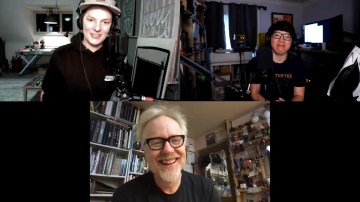


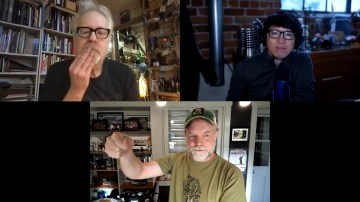






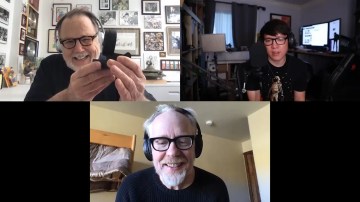



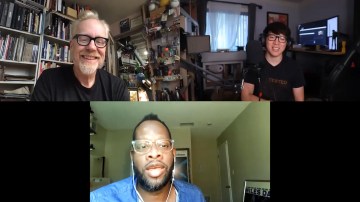

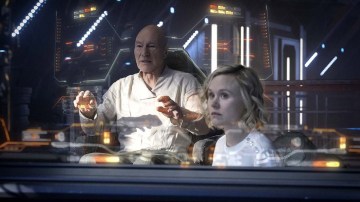






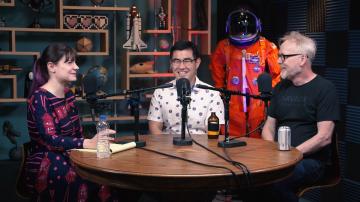




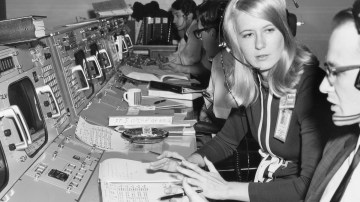
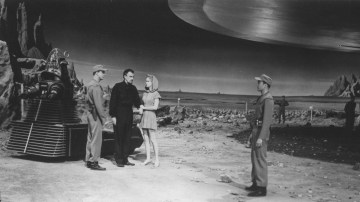


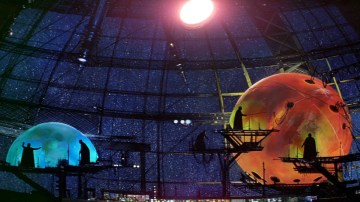






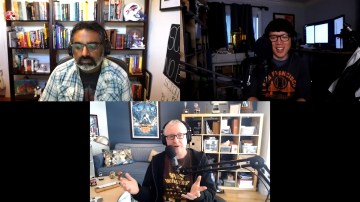

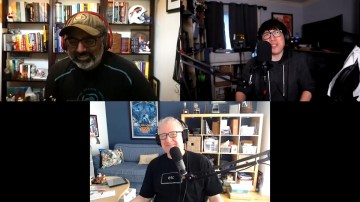
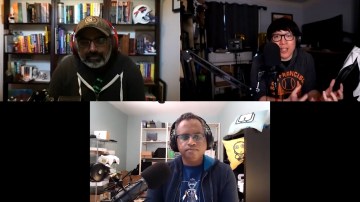








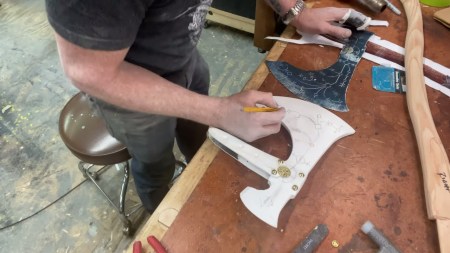



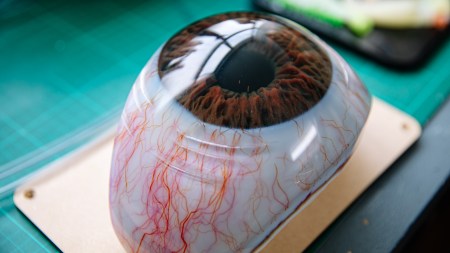


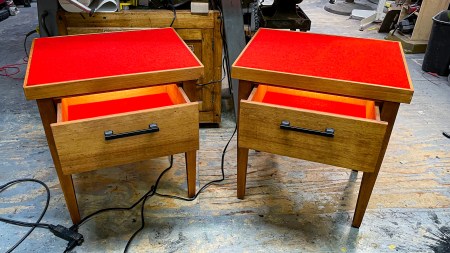
https://www.youtube.com/watch?v=MFzDaBzBlL0
Speaking of modified bikes. Very interesting.
This might be the Star Trek Beyond Fan Event. Still watching Still Untitled so I haven;t seen the fan event.
https://www.youtube.com/watch?v=6cYuGn45Crk
thank you for the link. pity they weren’t allowed to show the entire event.
For those curious about the bicycles they speak of:
http://www.gianlucagimini.it/prototypes/velocipedia.html
Can we see Destin and Adam do a Smarter Every Day together? Please?
Hi Guys. So, there’s some obvious changes happening from new intros to new offices as well as it becoming “Adam Savage’s Tested”. (I remember a couple months ago seeing it change to this for about a day but then switching back to Jamie and Adam’s Tested). Has there been a discussion shared publicly about the direction of Tested that I’ve just missed or will there be
Thanks for everything you guys do. Can’t wait to see some of the things you guys have been teasing!
I’m not sold on the modular phone idea.
Making something modular always necessitates additional space for the connectors. You also need additional structural considerations if the thing is to be as “stable” as an all-in-one phone.
If the point of the modular phone is upgradeability (I assume as a cost issue?) you also mentioned in your podcast the plummeting prices of … everything. So I don’t see the win there either. How soon after swapping parts would you essentially have a new phone anyway?
Outside home entertainment systems (where you have a dedicated receiver, Blu-Ray player, etc.), I’m struggling to think of anything else that is particularly modular among our home appliances or electronic gadgets.
Would you want a modular laptop where you can swap the display, keyboard, camera, etc? I should think this would already be a thing if there were a real demand for it.
I long podcasts!
Great fun!
Yes i did notice the header changed as well. So what is the deal guys?
I couldn’t find Will Smith’s talk about “supply-deman, gmail, modular phone.” Can someone link if you guys happen to come across it. thanks much!
If I have a choice for a modular phone I will get 50% battery, 25% camera, 25% voice and text. AND another with 75% battery, 15% antenna, 9% voice and text, 1% waterproofing. Or just bring back my Nokia 3310.
If we could solve Atlanta’s public transit problem with a decade and a half of engineering that would be an improvement on our current efforts.
Back when Mythbusters ended, Jamie pretty much said he was done working in front of the camera, so it is not surprising he’s stepping away from his small involvement with Tested.
They are moving offices, Norm said it was mostly due to the fact that their lease is up and rent was rising in the startup-heavy area of SF they were in before. The new office is also closer to Adam’s shop, making it easier for them to film more there.
They haven’t said anything about the editorial direction changing, although obviously with Adam ramping up his involvement, Kishore coming on board, bringing on Simone Giertz, and Frank being in the intro, there should be more making, science, silly robots and shop videos than before.
We can’t make CAD CAM to Easy peoples livelyhood depends on people not knowing how. Its hard enough to get engineers not to try to draw stuff themselves instead of using a designer who’s more competent. Also if its too easy AutoDesk wont be able to charge huge amounts of money for the software…To be honest I think 3d CAD should be a required course in Highschool. It helps people problem solve and understand things.
do you guys feel like 3D printing and things of that nature that automate the making process cheapens it? I know you said that drawing in 3D can be hard, but it’s getting easier and will continue to I’m sure… so is something printed in 3D have the same “maker value” as something someone built or carved by hand?
Hi guys! I have 2 good books recommendations that will give tons of ideas about the future with 3D, augmented reality, connected devices and how easy people can adapt to new tech: Daniel Suarez’s “Damon” and “Freedom”, specially Freedom for the AR stuff and to spark creativity. Right now I am at about 70% done with Freedom and there are so many awesome ideas that I feel sad in the knowledge that they are already possible but not here yet. I would love a spoilercast on the books if you read’em.
Kind regards
Adam, I feel your pain on the coffee front. Missing your “caffeine window” is rough.
I was in the Bay Area two weekends ago and made a point to swing by Ritual on your recommendation. Great place. I randomly ran into three guys I went to college with in Nebraska. Such a surprise. I was also floored by how much amazing street art there is in the Mission. I ended up taking a meandering walk up the various alleyways and side streets on my way back to Hotel Whitcomb. Found all sorts of interesting places along the way. It turned into a photo walk, which you guys can check out here: https://flic.kr/s/aHskwDZXcK
Adam, in your own words, “Failure is always an option.”
As for future tech, I’m excited about the Hyper Loop Train.
And as far as building things in CG, I love working in Rhino 3D. Been using it since version one. I begged my dad to go in on half the price and I spent every cent I earned one summer mowing grass to buy it.
Having made all of 2 trips to Atlanta, taking advantage of mass transit both times, I applaud their efforts at adding a subway/train network to a pre-existing city without starting from scratch! I think the network of trains and buses works rather well, at least for the parts of the city covered by the network.
I particularly enjoyed cruising along in the trains, peering out the windows at the Atlanta super highways– 5 lanes of concrete in each direction, loaded with cars, and every one of them standing still!
–Paul E Musselman
Adam–
I know only too well how addictive caffeine can be! I used to guzzle a 2-liter bottle of soda every day at work. On weekends I’d go camping with the Boy Scouts, away from my soda fix. And blamed the headache every weekend on the kids!
I’m now caffeine-free (except for my lunchtime iced tea) and my weekends are much calmer. I’ve often wondered how much of this nation’s productivity is due to everyone buzzing-up with caffeine every morning!
–Paul E Musselman
r e: pumping water uphill to make electricity—
Back in NJ our Scout Camp was behind a ‘pumped storage power generation station.’ They had 2 reservoirs, one on top and one at the bottom of the hill. During peak demand, they let the water run downhill and make electricity. At night they pumped the water back up the hill.
IIRC, it took 4 KW of energy to pump enough water uphill to make 3 KW running back down.
This was economically possible because the electric rates at night were lower than the rates they could charge during the day. And because there are generators always on-line 24-hours a day even if no one is using the power. So using that available nighttime power was a decent use of otherwise unused energy.
–Paul E Musselman
I was at a model train conference and attended a seminar on using cheap microprocessors to help run model trains. I was shocked to hear that there are Arduinos and Raspberry PIs and other microcomputers available for less than $20, less than $10, and in some cases less than $5! Talk about making components available to everyone!
Projects that were out of reach just a few years ago are now possible! One example was using one of those <$5 processors to run the blinking lights on a railroad crossing. Of course, a few years ago we could have used a 555 Timer and a handful of components to do the same thing... and without writing a program.
–Paul E Musselman
Once again, a video which has no sound for me. The 3D Printed Robot does, but not this vid.
Unfortunately autonomous vehicles are not likely to be the
solution to our future transit needs. The
whole idea of mass transit is that it move large blocks of people to where they
need to go all at the same time. Generally
in big cities everyone moves into the city in the morning and out in the
evening and they are all trying to get there at the same time. You wouldn’t be able to cycle the autonomous
vehicles fast enough to handle the load and even with more efficient movement
in vehicles there still is the issue of roadway bandwidth.
A single 10-car heavy-rail train can handle between 650-800
seated passengers with 10 minutes between trains (with PTC (positive train
control) interval times will be faster) that’s a lot of people. Subways have lower passenger counts but much
higher frequency. With the energy
efficiency of steel wheel/steel rail far higher than rubber tire/road,
passenger rail is really the best method in many (but not all) urban
environments even counting its startup costs.
Along the same vein, here is another energy storage solution
similar to pumping water uphill although this one has an unmistakable
connection to King Sisyphus.
http://www.rtands.com/index.php/track-maintenance/off-track-maintenance/rail-energy-storage-project-receives-lease-from-federal-agency.html
i used to fear that, but i don’t anymore. credit goes big time to sean charlesworth for that.
when i watched him talk about his thought process, i noticed (i’m a bit of a dunce sometimes… could’ve thought of that from the beginning) that there’s a set of very unique challenges specific to 3d printing. solving them skillfully and/or elegantly is a valuable quality (and serious skill!) just as cutting dovetails with a perfect fit is, or writing a genius passage of code, or finding that perfect hardware alignment that makes soldering easier while improving the final product’s usefulness. or whatever else, done really well.
as for 3d printing’s inherent reproducability: if that were a danger to what came before, digital painting and prints would have cheapened traditional painting. or cnc routing and machine assemble would have cheapened carpentry. or, in fact, traditional carpentry would’ve already been cheapened by manufacture, and traditional painting would have been made obsolete by lithography and photography.
i see new avenues as bringing their own challenges and qualities to the table, and ideally, they complement each other and enrich the total playing field of qualities we can admire and value in things. naturally, they are different qualities. we value a clay sculptor’s touch as a different quality from someone’s 3d printing savvy – but i wouldn’t say one of them makes the other worth less. we’ve kinda had that before with things like bauhaus, didn’t we?
My comment got messed up. Sorry
That’s fair. And several very good points. Perhaps cheapen wasn’t the right word. I agree that there’s room for all the things…
Though I disagree a little on the idea that CNC and digital or mechanized mediums haven’t impacted traditional arts; perhaps not from an artistic appreciation standpoint (people who create appreciate other creations), but from a consumer/layperson standpoint for sure. Beyond being a hobby most traditional crafting really does seem obsolete. Sure there are niches … and change is inevitable … but it still makes me uneasy on some level.
At the same time I think 3D printing is awesome and I love it… I guess I’m conflicted still.
Also apparently the reply button on Explorer doesn’t work right. so sorry if you get double notifs/posts
no worries, only got one email. 🙂
no disagreement that traditional crafts weren’t impacted – their role and place absolutely changed. and in many cases, i mourn the craft that has been lost, or all but. but especially in the movement of making, i feel that includes a care for the material culture, beyond the mere rules of commerce, there should be more focus on what went into an object, its context, and its finer points.
the market out there sure is rougher waters.
I’m sure this is old news, but I just noticed the new Tested logo. I guess Adam got it in the divorce.
Interested in the comments in this podcast about ‘everybody thinks they’re the good guy’ I recommend you spend 3 minutes watching the Mitchell and Webb sketch, ‘Nazis are bad’ I think this captures this perfectly (and it is not in bad taste!)
One of the coolest ways to store energy for the grid is for Nuclear power, which is almost impossible to ramp up and down as the grid needs.
The problem with storing power is the loss in transferring it from one medium to the other. You don’t get as much energy out of the water you pump uphill as you used to pump it due to losses in the pipes, motors, turbines etc. With nuclear power the first energy is in the form of heat generated by the nuclear reaction, which is generally caught in a heavy water or molten salt. This heat can then be stored in a heat reservoir. Basically a huge tank that is well insulated. This is cool because not only does it lose energy quite slowly (slower than the loss of transferring energy mediums) but it also allows the plant to produce more energy than it is rated at or to store excess if demand isn’t high.
Adam, I’m not sure which video I saw you say that you are looking for small maker shops, but here’s one. http://microship.com/make-anywhere-mobile-lab/ This is Steven Roberts’ (the original Technomad) new mobile shop he built to finish his sailboat for full time living. Personally, I love the whiteboard solution.
Zbrush is probably the best 3d modeling software out there right now, surprised none of you mentioned it
In just four simple steps, any student can develop an excellent editorial to persuade the audience in his own thoughts. It is critical to select one specific idea which matters for the modern community.
https://overnightessay.co.uk/blog/writing-editorial
Writing such paper involves defining this term first. You may know that it has to do with sharing an opinion with a large audience. In academic language, writing an editorial is the process of developing a paper which serves as an opinion piece for newspapers, magazines, and study projects, either print or online. It is the strong way to defend one’s opinion on some issue or topic. Without an opinion, it would be an expository text. Writing such content is much easier, but it reflects no specific knowledge or research. Editorial is recommended whenever you have an aim of persuading a group of people in the correctness of your thoughts.
Building an editorial belongs to the persuasive sort of academic writing, so it has a lot in common with an argumentative essay.